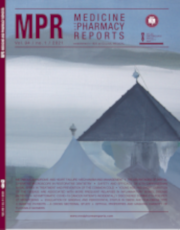Cytogenetic analysis of genetic damage in young individuals exposed to chronic mechanical irritation in the lateral border of the tongue due to sharp teeth – a novel study
DOI:
https://doi.org/10.15386/mpr-1567Keywords:
micronuclei, sharp teeth, inflammationAbstract
Background. Chronic inflammation is estimated to contribute to approximately 25% of human cancers. Inflammation can be induced by chronic mechanical irritation which can lead to oral pre-cancer and oral cancer. Though many studies have been conducted to identify the genetic damage in oral cancer or dysplastic stages, no study has been completed so far on early detection of genetic damage in healthy individuals presenting with sharp teeth in contact with the lateral border of the tongue.
Objective. The study is aimed at analyzing the genetic damage (micronuclei) in healthy individuals with sharp teeth in contact with the lateral border of the tongue causing chronic mechanical irritation.
Methods. The study group comprised of 75 clinically healthy individuals with sharp teeth in contact with the lateral border of the tongue and 25 clinically healthy individuals with normal teeth in contact with the lateral border of the tongue as a control group. Brush samples of epithelial cells were collected, then spread over clean glass slide and fixed in 100% alcohol, stained with rapid PAP and analyzed under the light microscope. The exfoliated cells were examined to detect micronuclei.
Results. Micronuclei frequency was found to be increased in the study group where sharp teeth were in contact with the lateral border of the tongue of healthy individuals without deleterious habits such as usage of tobacco in smoking/smokeless form, areca nut chewing or alcohol consumption.
Conclusions. Cytogenetic analysis is a simple and scantly invasive technique allowing clinicians the early detection of DNA damage in patients with sharp teeth and subsequently preventing carcinogenesis by proper treatment and follow-up.
Downloads
Published
How to Cite
Issue
Section
License
The authors are required to transfer the copyright of the published paper to the journal. This is done by agreeing to sign the Copyright Assignment Form. Whenever the case, authors are also required to send permissions to reproduce material (such as illustrations) from the copyright holder.

The papers published in the journal are licensed under a Creative Commons Attribution-NonCommercial-NoDerivatives 4.0 International License.

